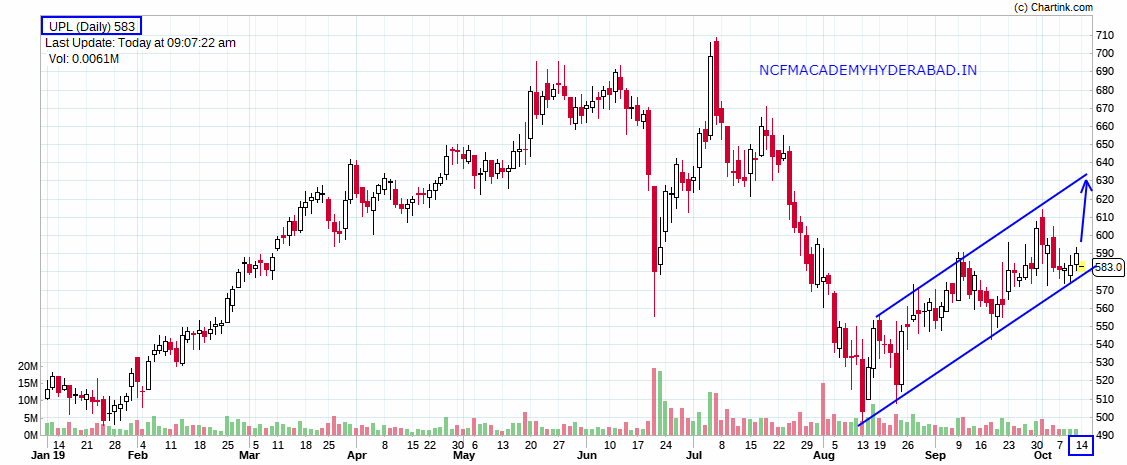How to Learn Stock Market Trading @ NCFM Academy Hyderabad.
Who Is The Major “Culprit” That Might Cause A Forex Reversal Setup To Fail
Like I always say, Trading can be profitable if and only if you know the rules of the game and understanding Currency Trading Technical Analysis is part and parcel of your Forex Trading Success.
In the realm of Forex Trading Technical Analysis, perhaps the most commonly traded and all-time favorite setup of most technical traders is the Forex Reversal Trading setup.
Basically, the Forex reversal signifies the end of an on-going trend and the beginning of a new trend in the opposite direction in the currency markets.
In a nutshell, we are looking for a reversal in price action.
Take for example, if the price is rising, we are looking for it to begin its initial descent and at that point, we are inclined to go short.
Likewise, if the price is falling, we are looking for it to begin its initial ascend and at that point, we have the inclination to go long.
Perhaps what makes this trading setup so popular lies in the fact that most traders are ever so eager to get on the trending bandwagon right at the first stop and hopefully take the ride all the way to the last stop before price reverses again, thus maximizing profits along the way.
While this may not necessarily be a “Bad” thing, it is imperative that we understand the fact that there is no reversal indicator out there can accurately predict the end of an existing trend all the time.
Remember, in Forex Trading, it’s all about stacking the odds in our favor when entering such a trading setup.
So what are the factors that might cause the typical Forex Reversal trading setup to fail?
From my experience, there is one major “Culprit” that always seems to crash the party and invalidate any typical Forex reversal setups.
For me, the presence of “Long Bars” near the completion of a reversal indicator is the number one red flag to watch out for.
It’s a fact that not all reversal signals are guaranteed to work all the time, but from my experience, the appearance of these seemingly “Long Bars” increases the failure rate no matter what kind of reversal indicator signals are being used.
To increase the chances of success, it is preferred that we enter such Forex reversal setups with as little momentum as possible. The more momentum a currency pair has, the more force it needs to reverse its direction.
And the presence of “Long Bars” simply indicates that price still has a lot of momentum going and it is going to take a lot more momentum or force in the opposite direction to reverse it.
Take the analogy of a driver trying to make a “U” turn at the junction of a narrow 2-way street. For the driver to successfully navigate the reversal, he or she has to gradually slow down the vehicle as to the junction approaches, make a considerable effort to turn the steering wheel before they can safely negotiate the narrow turn.
In comparison, the presence of “Long Bars” near the entry of any Forex reversal trade setup is like heading into the U-turn junction with far too much speed, it decreases the probability that price will reverse and increases the chance of hitting the curb instead or in this case your stop loss.
So how do we determine and identify a “Long Bar”?
The obvious answer is of course when the individual bar is seemingly “longer” than the rest of the pack. Unfortunately, it is not as simple as that.
Technically speaking, there is no standard way to gauge how long a bar has to be in order to be considered a “Long Bar”, it is fairly subjective and dependent on the type of currency pairs and setups utilized. And in my book, there are a couple of reasons for this.
Firstly, every currency pair has its own unique characteristics and price range within a single bar.
Take for example, on the daily charts, a 100 pip bar on the NZD/USD is considered to be relatively longer than a 100 pip bar on a highly volatile and choppy pair like the Cable.
Secondly, each Forex reversal setup pattern is different in terms of setup conditions.
Some reversal patterns have a much smaller range than others, so it is difficult to put a numerical “Pip” value on a long bar.
All I can say is that when taking a Forex reversal trade, we want to look for deceleration into the reversal setup entry, not acceleration. We want price to be tapering instead of extending.
Perhaps, the best piece of advice anyone can give is that if it looks like price is accelerating into your Forex reversal setup or when there are clear long bars, simply avoid it and wait for the next opportunity to come along.
Remember, the Forex market is the largest financial market in the whole world, it provides a never-ending stream of trading opportunities, so why to risk it.
So what if you happen to miss one or two reversal indicator signals that would have been profitable, it is not the end of the world because there will be more than enough trades in the future, better safe than sorry right?
If you are interested to know How to Learn Stock Market Trading, reach us on 9989134470.
